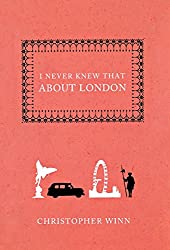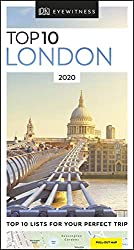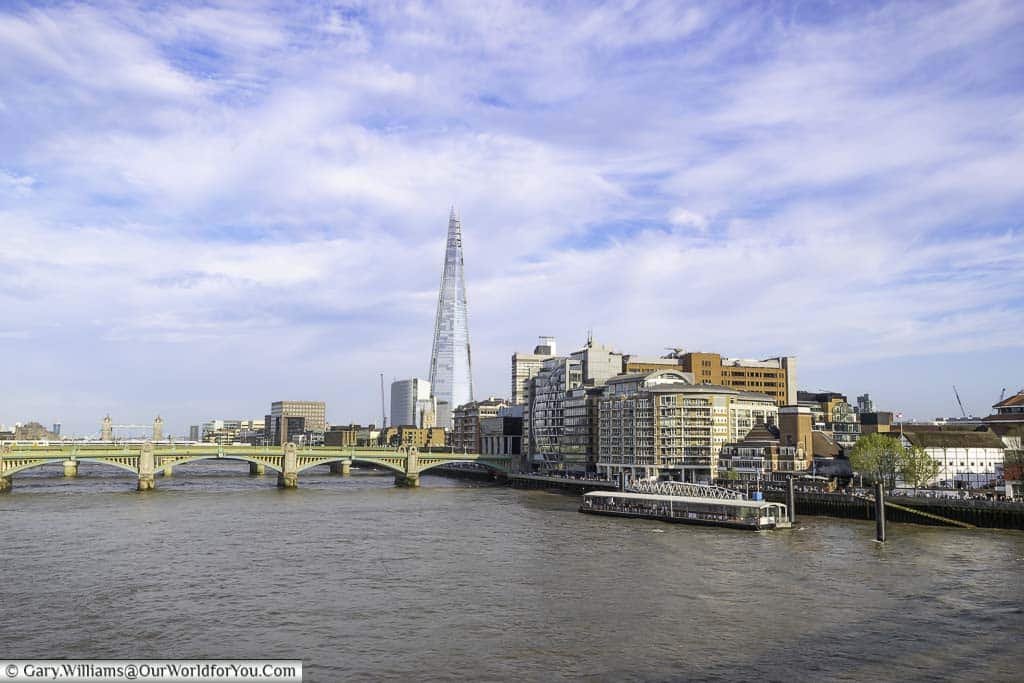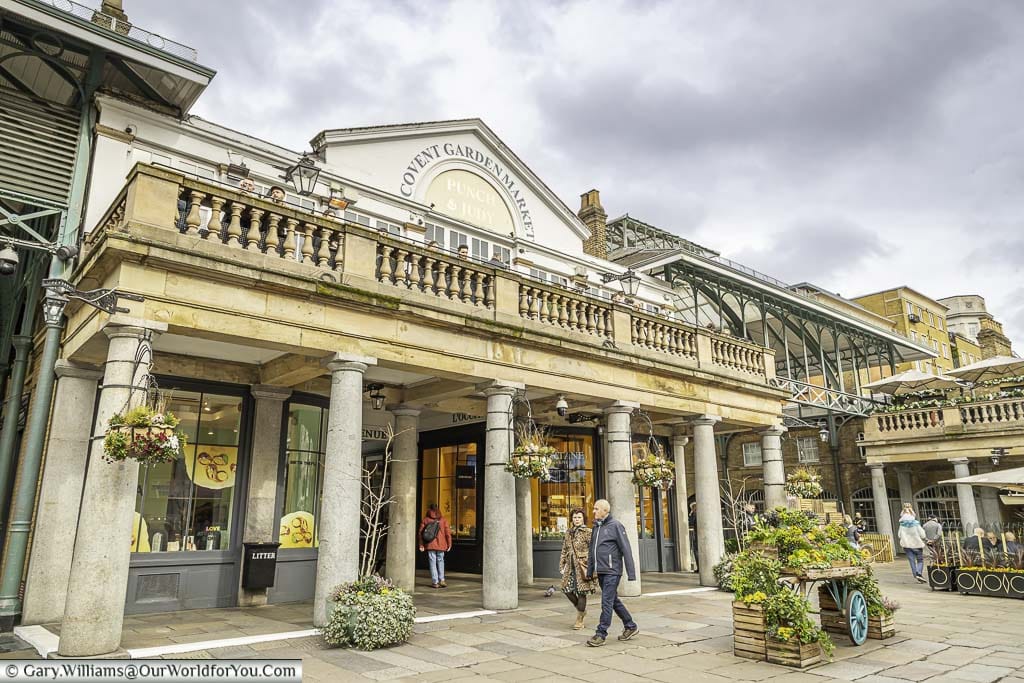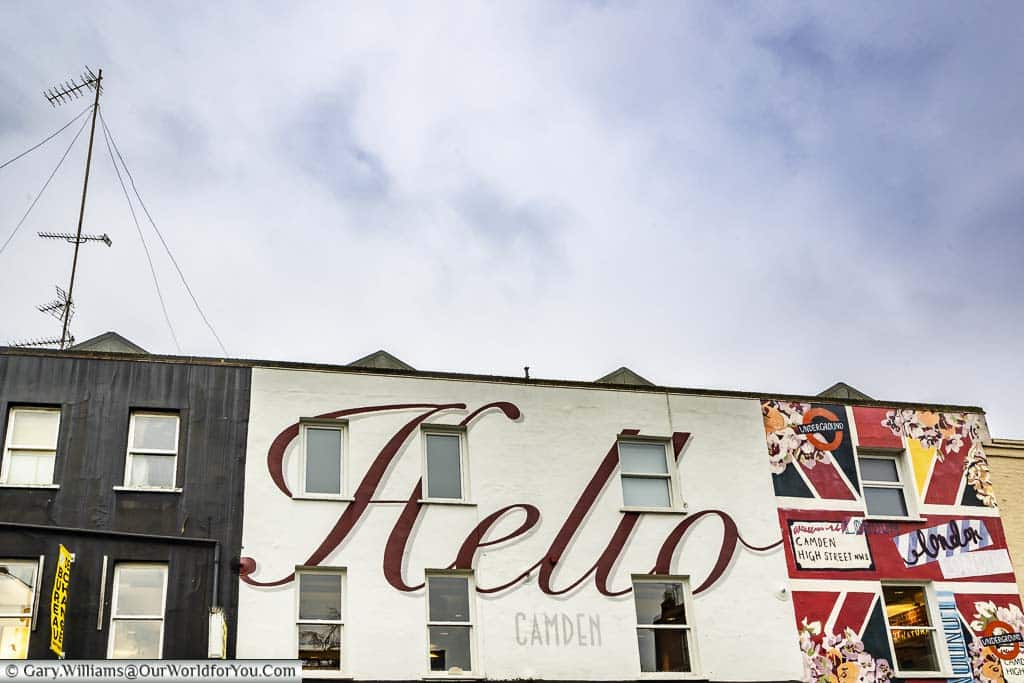From the historic shady lanes to the contemporary modern art
I love visiting Bankside in London; it’s bustling, laidback and full of history. Bankside is located in the Borough of Southwark and hugs the south side of the River Thames by Shakespeare’s Globe.
I’ve been strolling through this region of London on and off for the last 30 years, and it has undoubtedly seen some changes in those few decades, let alone the centuries that have passed.
It’s a fantastic area of London to explore; as you leisurely amble along Bankside, Southbank, and a few streets beyond, you’ll be wending your way through Southwark’s historical past.
Discover a medieval prison, a galleon, Shakespeare’s Globe, Tate Modern, London’s lively Borough Market and the Crossbones Graveyard, to name a few.
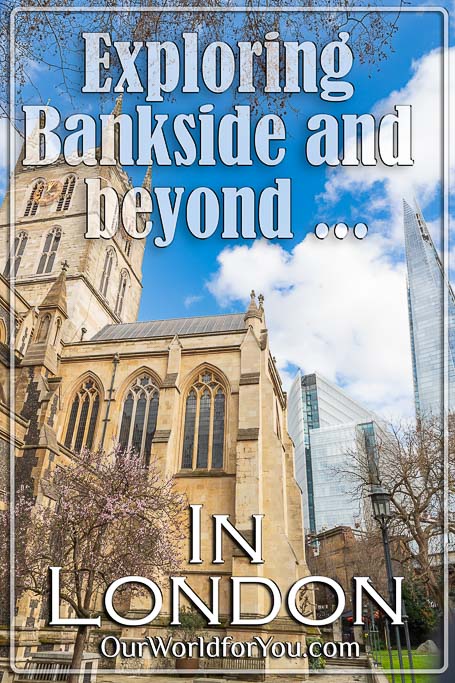
Where is Bankside in London
How to get to Bankside
Bankside is located on the south side of the River Thames. Its closest underground stations are London Bridge Station, on the Jubilee Line and the Northern Line and Southwark Station, also on the Jubilee Line.
London’s underground network is so easy to use, just tap in and out with your phone, and your journey is underway. Check the Transport for London website for the latest updates.
For a relaxed arrival to Bankside, jump aboard the RB2 line on London’s River Bus, and you’ll be dropped at Bankside Pier.
There nearest mainline station to Bankside is London Bridge Station. Although not too far away are Waterloo East, Blackfriars, and London Cannon Street stations.
If you’re visiting from further afield, check out the offers on Raileasy.
A little history around Bankside
Bards, breweries, and brothelsBankside itself runs roughly from London Bridge in the east to Blackfriars Bridge in the west and is around 1 mile in distance, give or take a few detours.
The area of Bankside was claimed by the Bishop of Winchester, and during the early 13th-century, Winchester Palace was built along Clink Street. Remains of the Great Hall and the Rose Window can still be seen today.
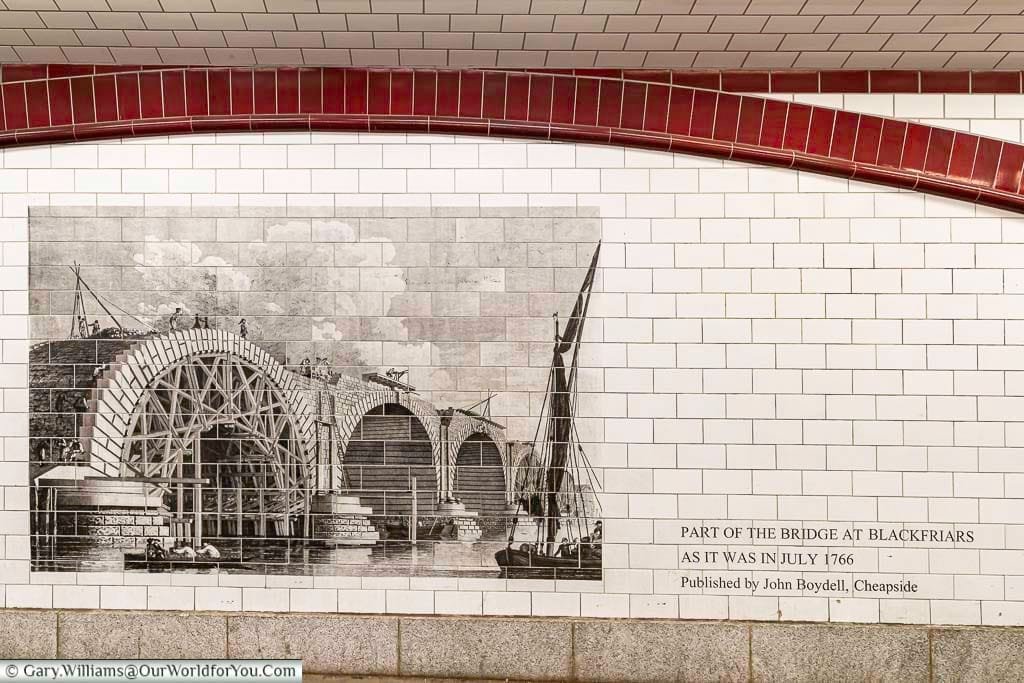
The name of Bankside was recorded in 1554 as ‘Banke syde’, and even though the City of London was just opposite Bankside, it fell outside its jurisdiction and led to a rather rowdy region of London.
Bankside has had quite a chequered past, and during the 16th-century this lively district was often frequented by ne’re-do-wells and ladies who worked in houses of ill repute. The prostitutes became known as ‘Winchester Geese’ as the Bishop of Winchester owned the brothels and turned a blind eye and benefited from their revenues.
Bankside was also known for gambling dens, bearbaiting, breweries, and playhouses and became an inspiration to many writers. A replica of the Globe Theatre was opened in 1996, and excavation is still taking place of the Rose Theatre, which was discovered in Park Street in 1989.
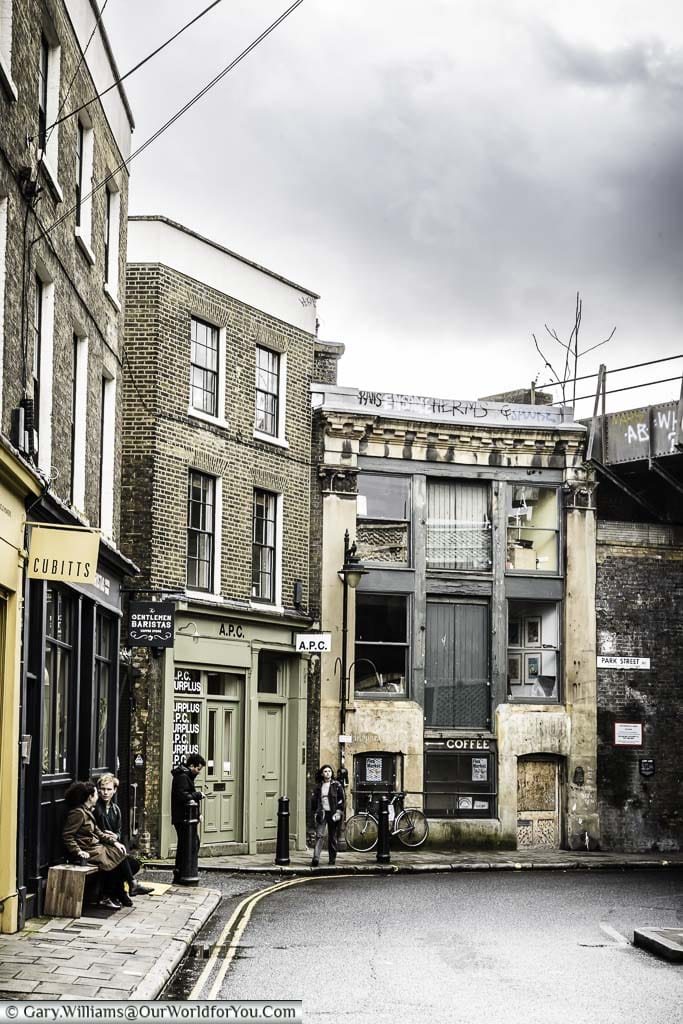
The historic Borough Market can be found within the web of these south London streets and is one of the largest and oldest food markets in London, dating from 12th-century.
Fast forward several years, and Bankside was thriving with industrial trade. The Thames flourished with traffic supplying goods through the wharves and warehouses lining the riverside. Unfortunately, Bankside suffered heavily through bombing during the Second World War.
Today this charming and upbeat district of London is prospering once more.
Beneath old London Bridge
Historical steps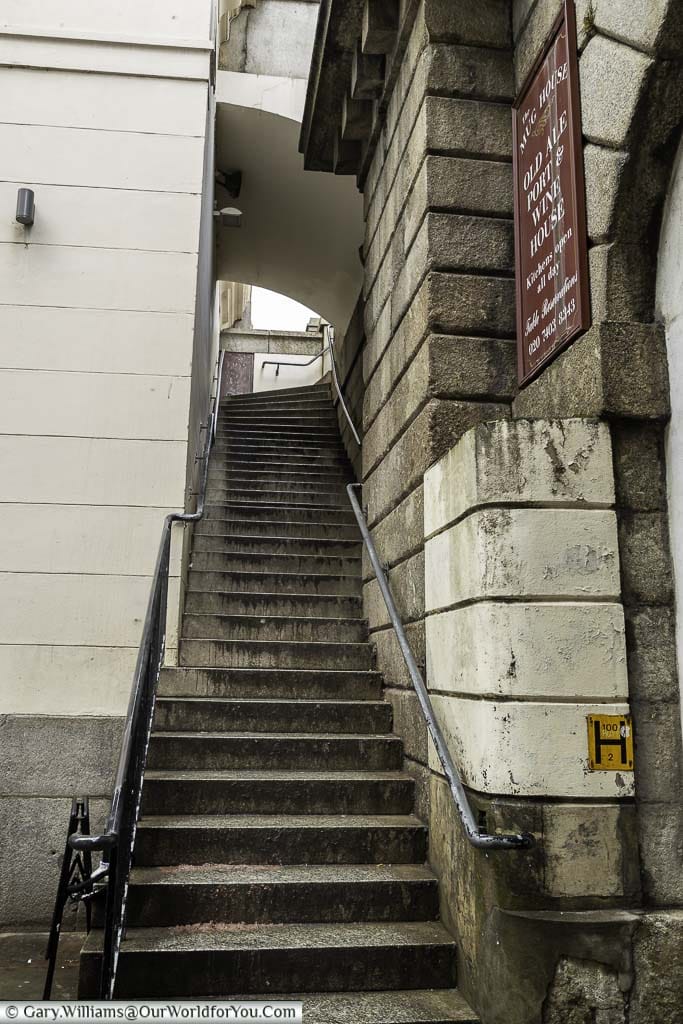
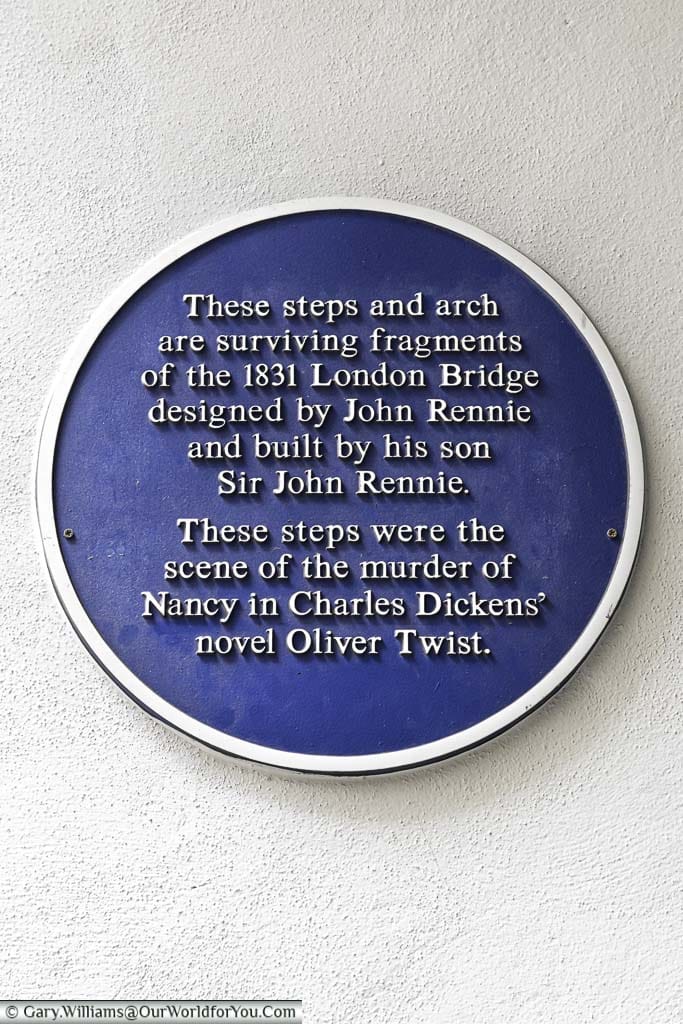
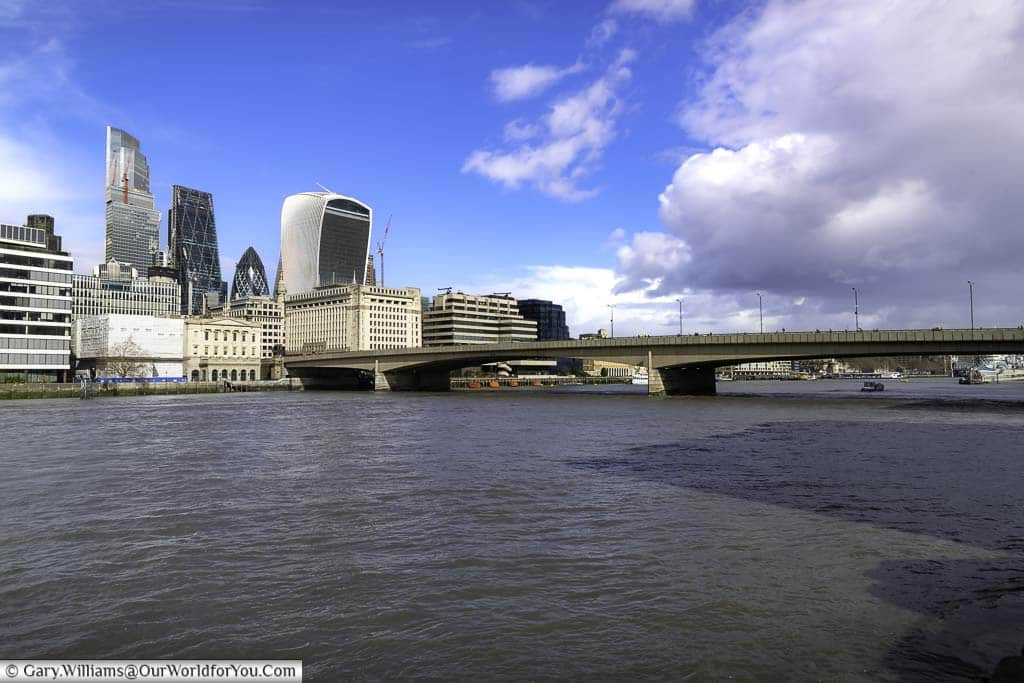
Wander into nearby Minerva Square to the river’s edge for an incredible view of London Bridge and the City of London skyline beyond. This is a wonderful spot to watch London’s river traffic cruise by.
Opposite Minerva Square is The Mudlark pub, established in the 1700s. This characterful pub was used in filming Bridget Jones’s Diary, Lock Stock and Two Smoking Barrels, and Harry Potter and the Prisoner of Azkaban.
Where to stay in London's Bankside
Visiting Southwark Cathedral
A poignant memory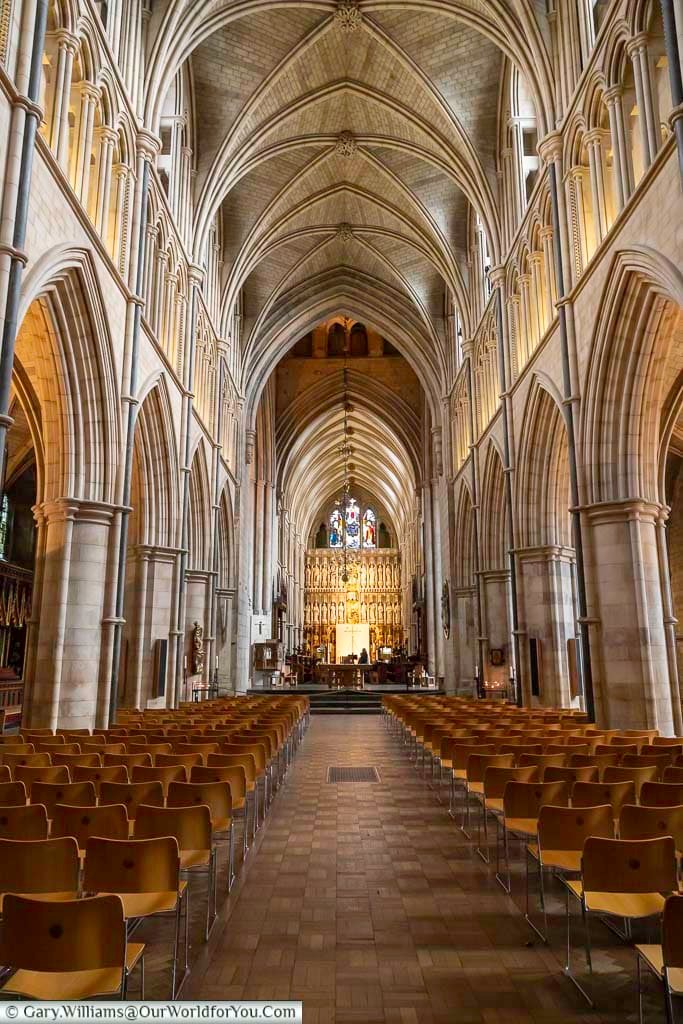
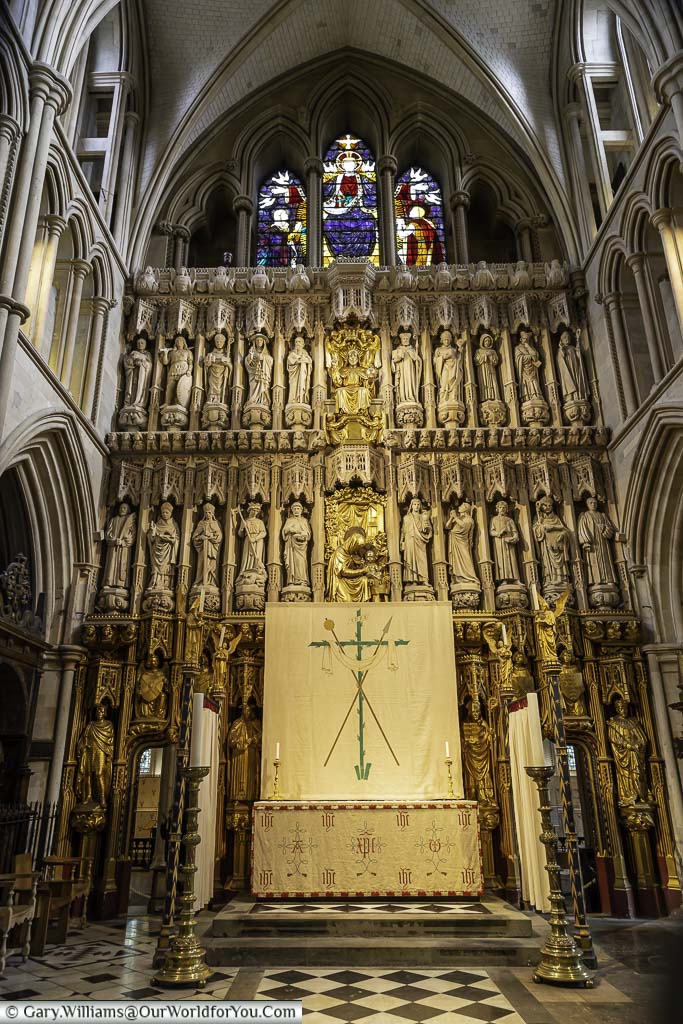
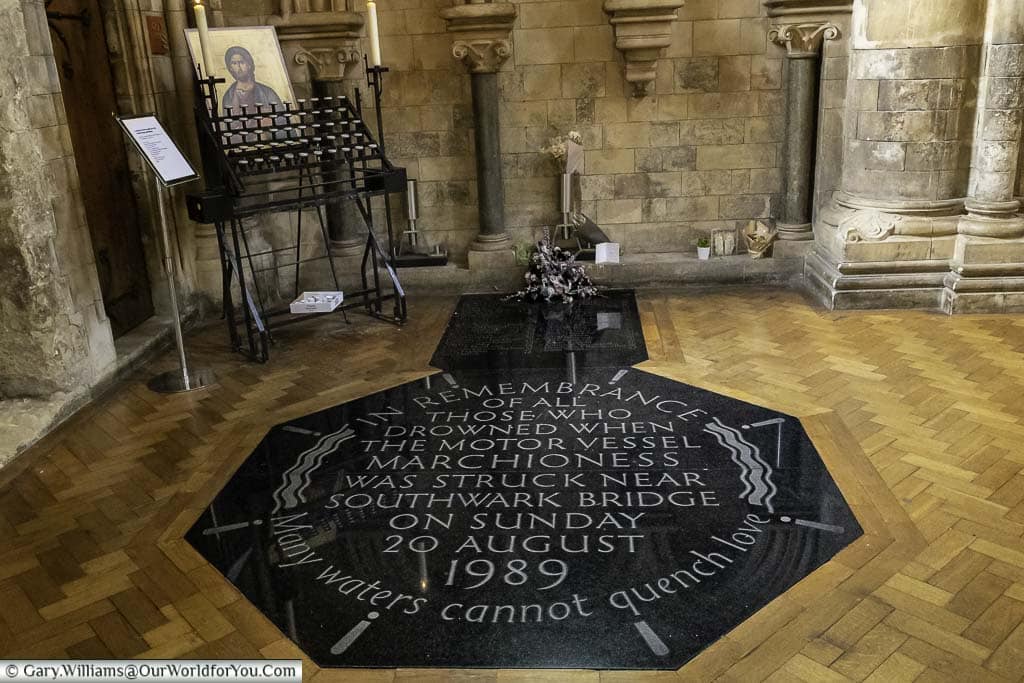
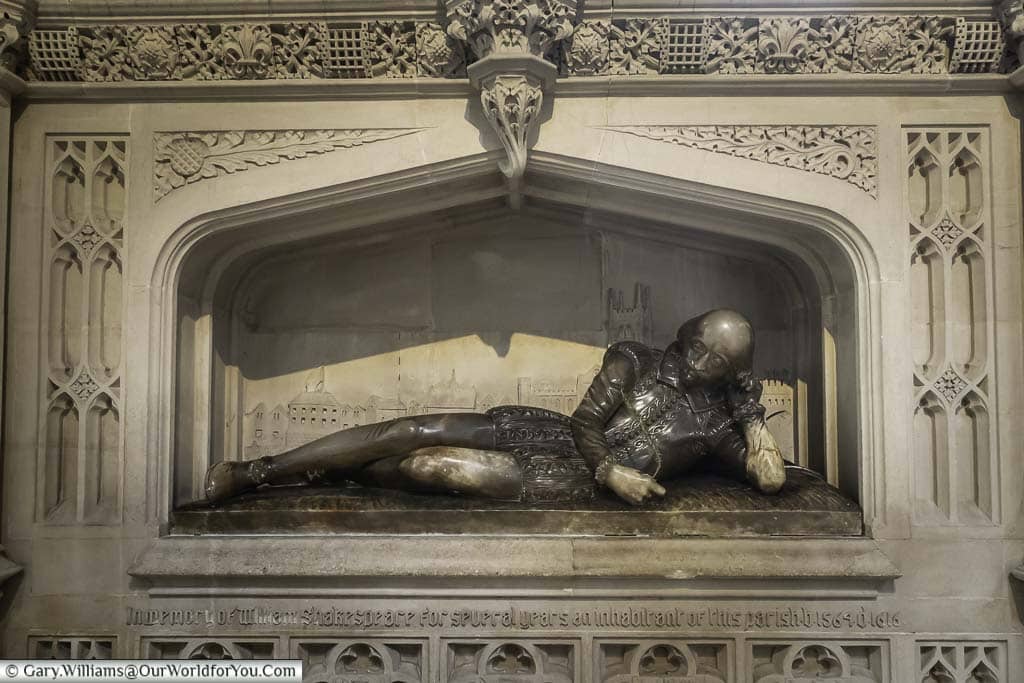
We have a little book on our shelves that we sometimes delve into when we're about to hit an area of London.
Packed full of historical facts, and broken down into the different regions of London, it's a great resource to help you see what's hidden in plain sight.
Available in Kindle & Hardback editions, it's an excellent addition to anyone's collection who loves London.
London’s Borough Market
A world of cuisine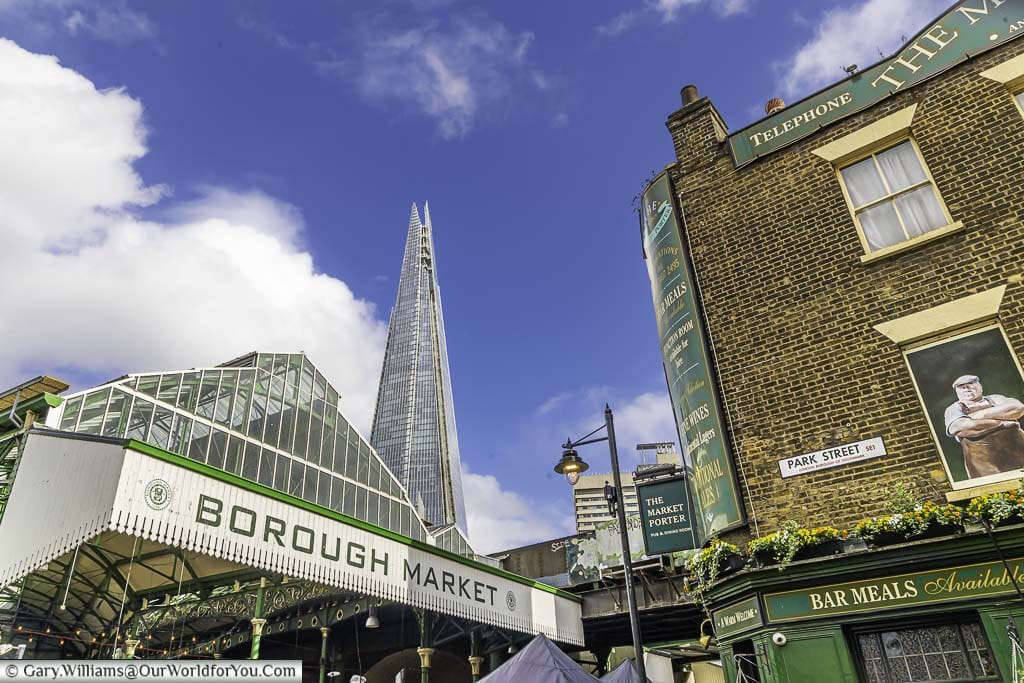
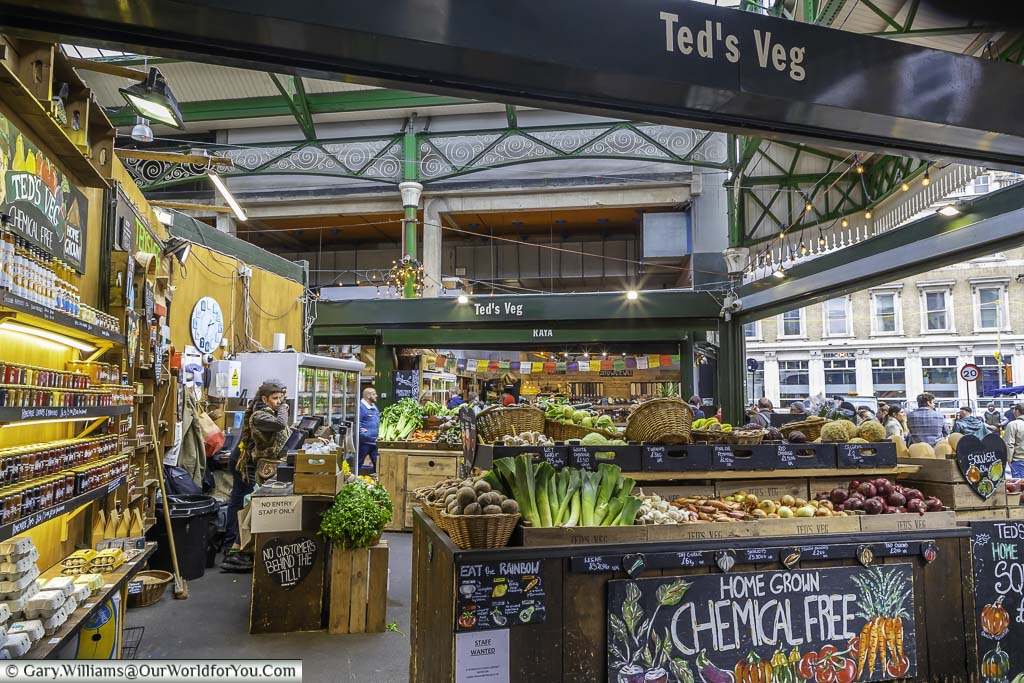
The market sells all different types of foods, from your run-of-the-mill fruit and veg to speciality foods from around the globe. Borough Market not only offers produce for you to take away and enjoy at home, but plenty of stalls sell freshly cooked street food for you to savour in the market.
The market is open from Tuesday to Sunday, and just a word of warning, it can get extremely busy at the weekends.
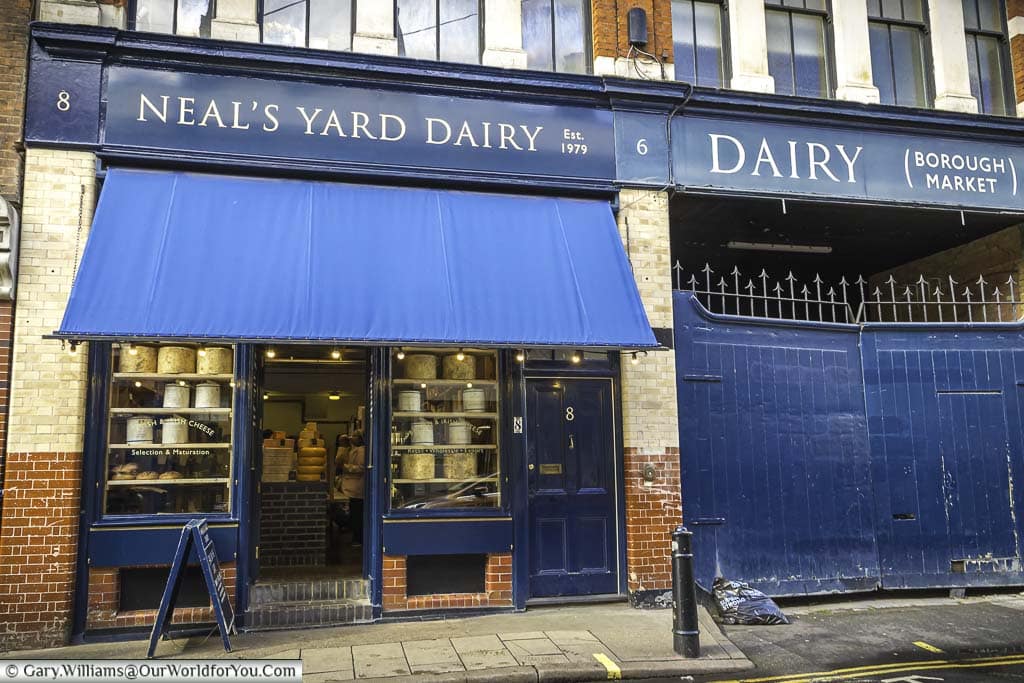
Once you’ve visited Borough Market, you must explore all the surrounding streets and lanes, they are full of such fascinating history, and you may also recognise them from the silver screen, particularly along Park Street, where scenes from Lock Stock and Two Smoking Barrels were filmed.
Also, along this lane, you’ll see Neal’s Yard Dairy, which opened in 1998 and sells some beautiful cheeses.
Hop aboard the Golden Hinde
Or get locked up in The ClinkHeading down towards the River Thames along Cathedral Street, we arrive at the Golden Hinde, a galleon moored in the St Mary Overie Dock dry dock.
The Golden Hinde is a replica of the 16th -century Elizabethan galleon, the first English ship to circumnavigate the globe and was captained by Sir Francis Drake. The ship set sail from Plymouth in 1577, and after a very turbulent and long trip, the galleon returned back to English shores 3 years later in 1580.
The ship was originally named the Pelican; however, during the circumnavigation of the globe, it was renamed the Golden Hinde on 20th August 1578. Jump aboard and discover life onboard the galleon.
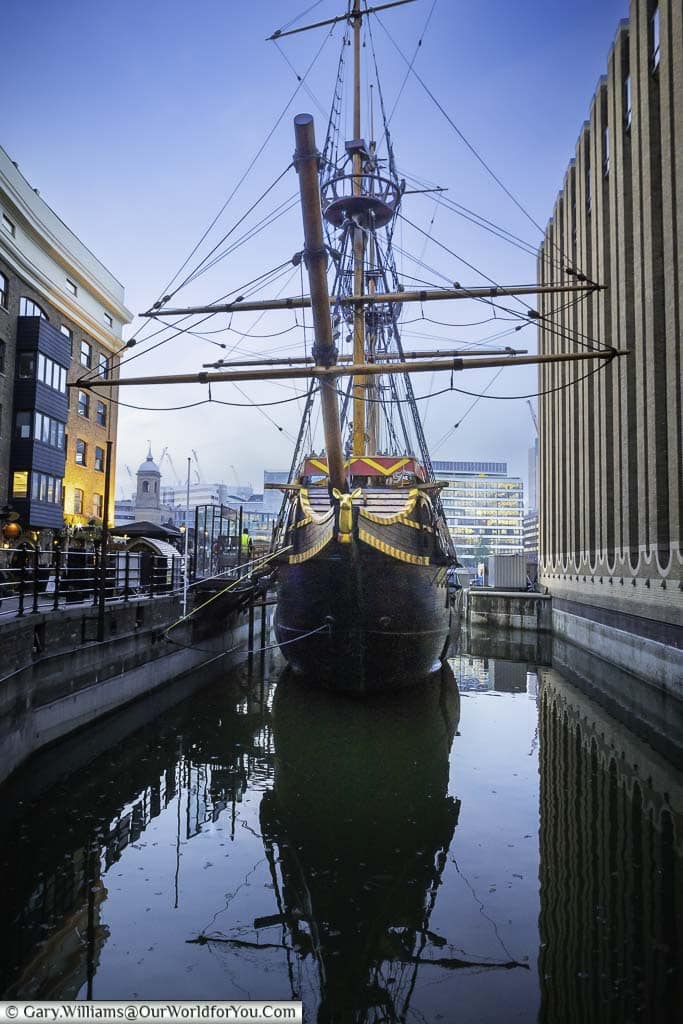
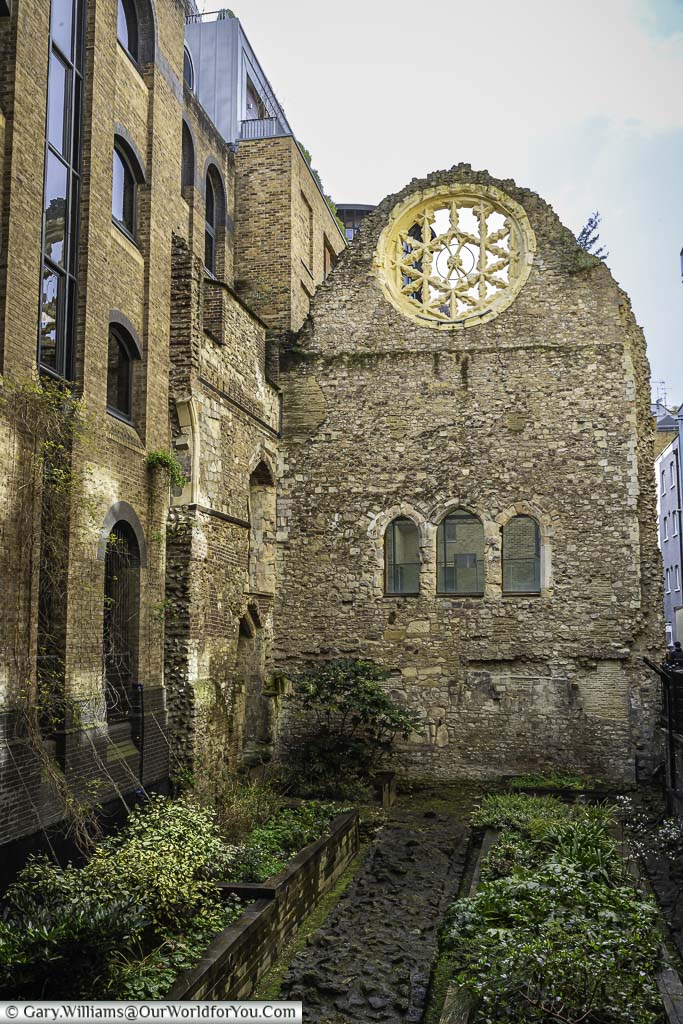
As we stroll along Pickford’s Wharf onto Clink Street, you’ll spot the ancient ruins of Winchester Palace. Winchester Palace was once an extremely grand palace. It was once the residence of the Bishops of Winchester during medieval London.
Winchester Palace was mainly destroyed by a fire in 1814; however, the Great Hall and the Rose Window remains can still be seen. The ruins are now managed by English Heritage and Bankside Open Space Trust.
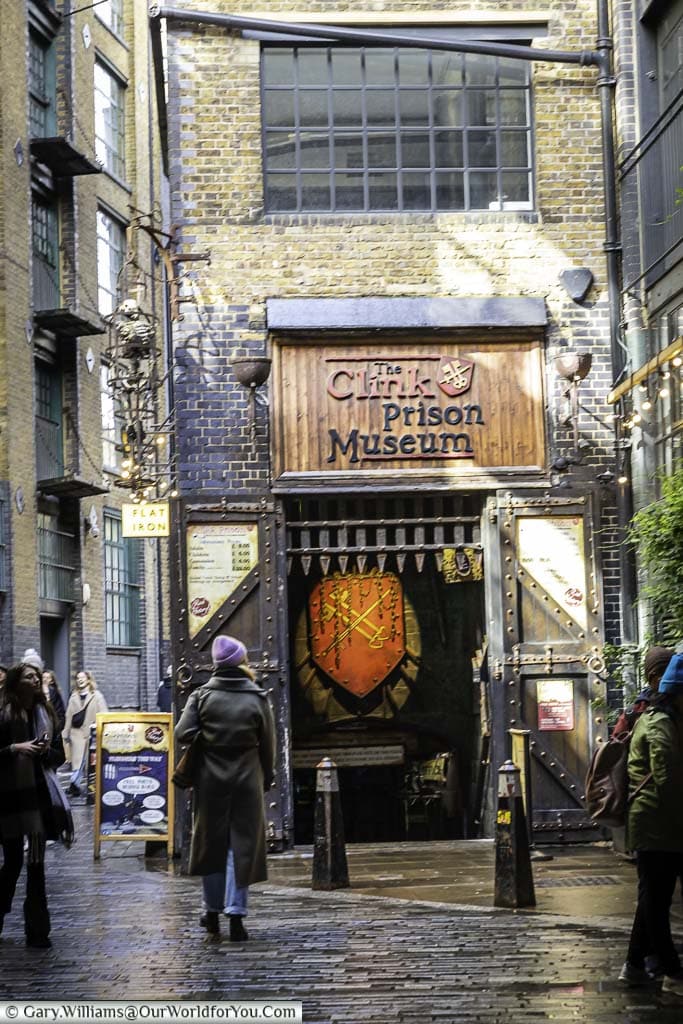
If you've yet to discover London and its ancient history, then let's start planning. I find these DK Eyewitness Travel Guides invaluable. They're extremely informative, easy to follow, and the pictures and maps tempt you into discovering more of those fascinating sites.
You can now grab a recently revised copy of this guidebook, so you won't miss a thing.
Exploring Shakespeare’s Globe
Strutting the theatre stageAs we weave our way back towards the Thames, passing The Anchor inn, we amble along Bankside and under Southwark Bridge for another lovely view across London’s skyline with St Paul’s Cathedral in the distance.
It’s along Bankside where you’ll discover the magnificent “Shakespeare’s Globe”. The Shakespeare’s Globe is incredible and looks so majestic nestled along the south bank of the River Thames.
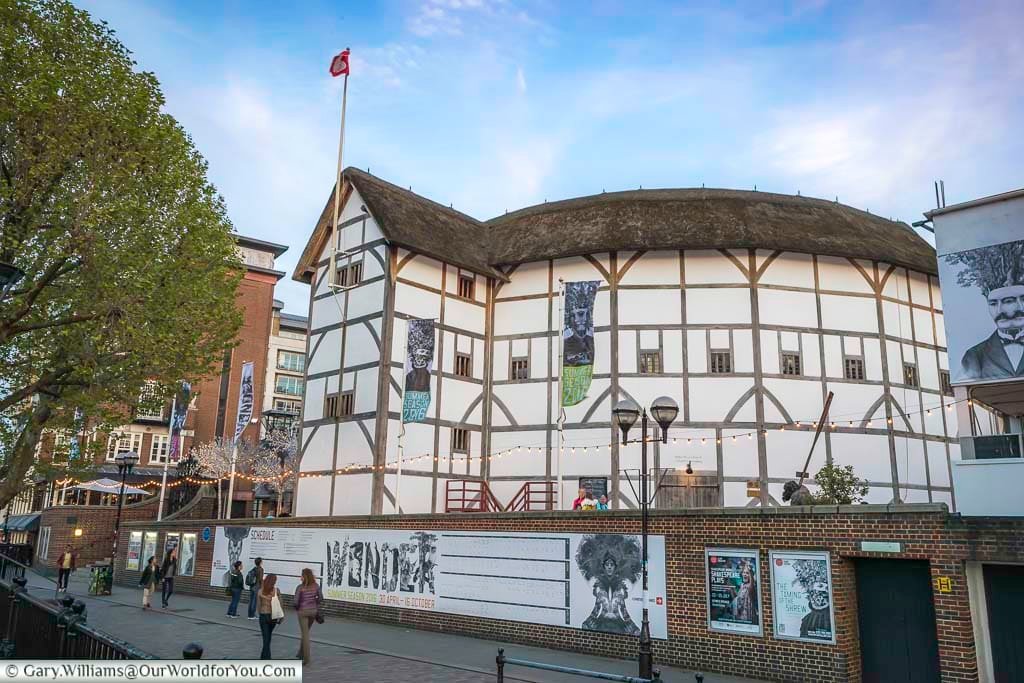
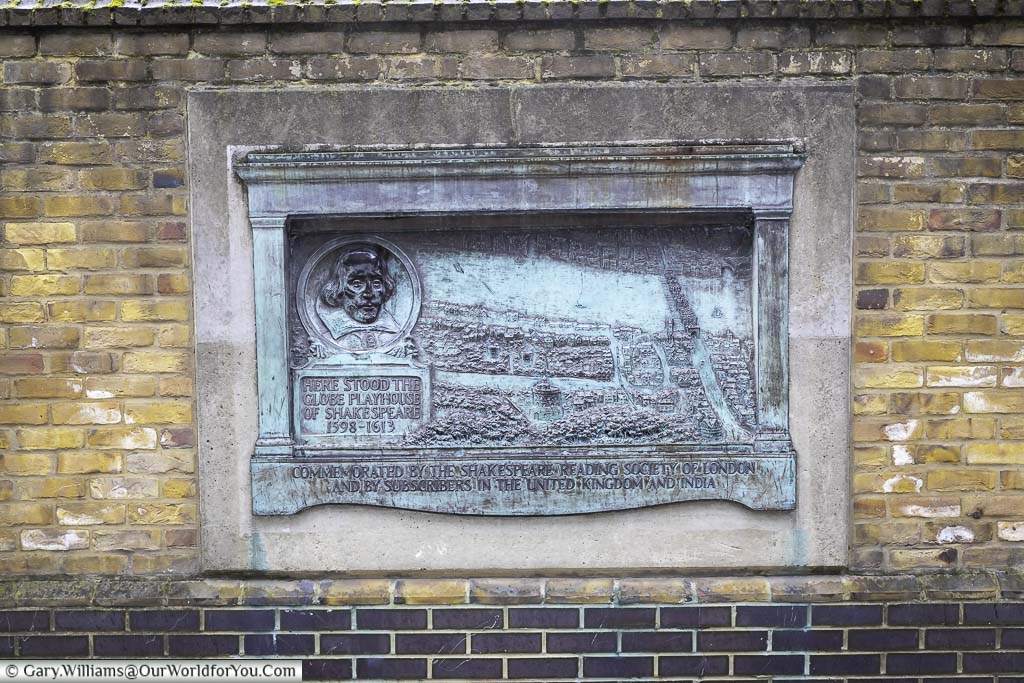
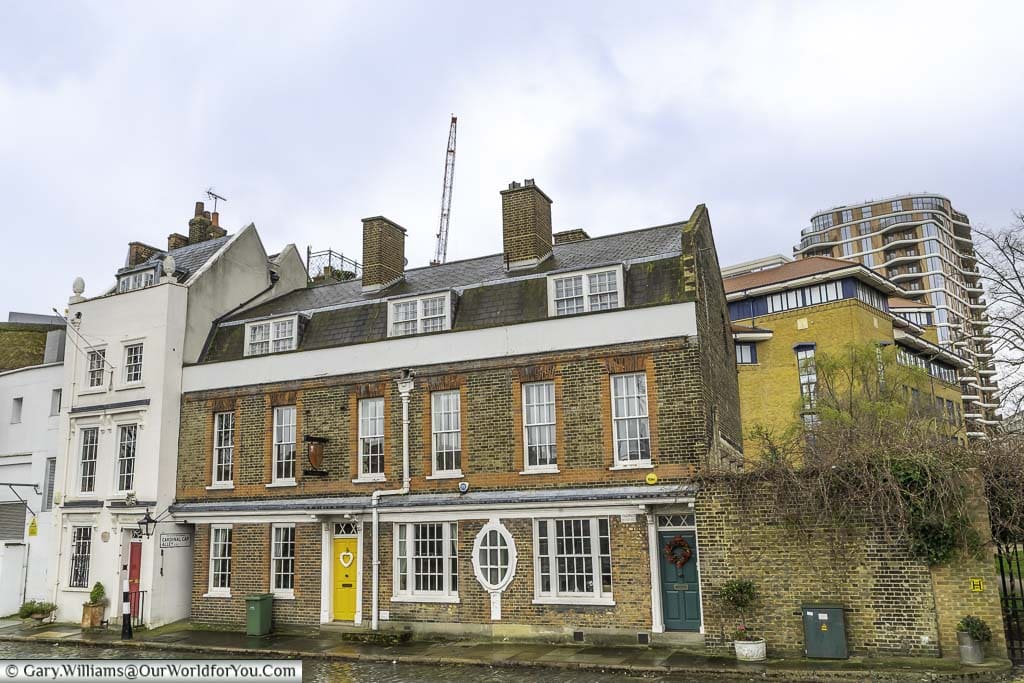
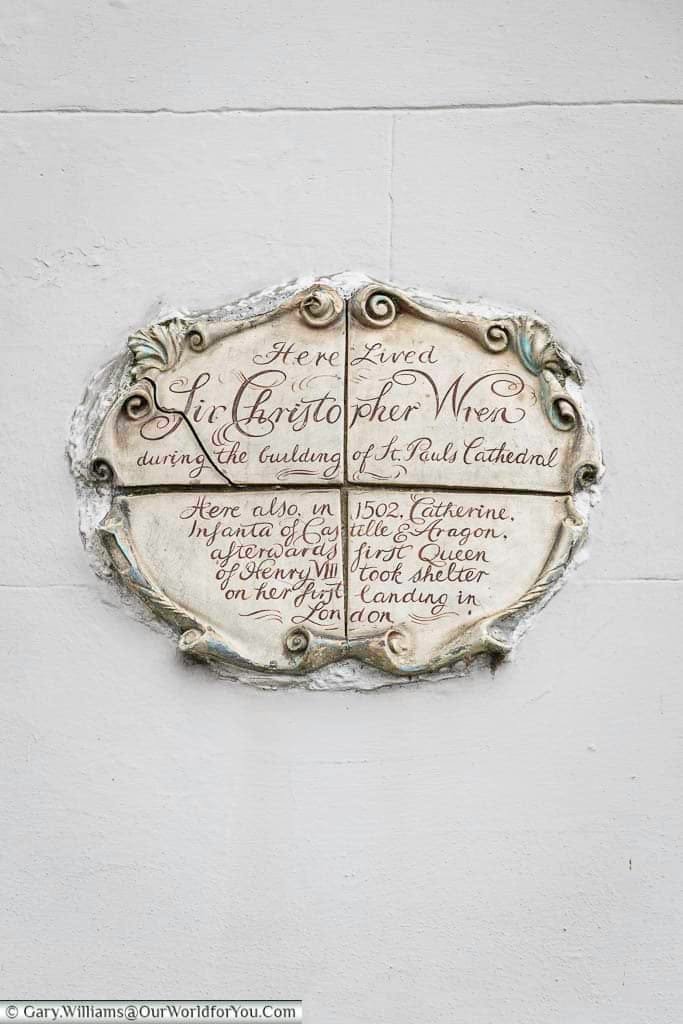
Explore London on foot
London’s “Wobbly Bridge”
And a power station like no otherAlong the last little stretch of Bankside is where the Millennium Bridge crosses the River Thames linking Bankside with the City of London.
The Millennium Bridge was nicknamed the “Wobbly Bridge”, due to the noticeable swaying motion it experienced on its opening day on 10th June 1998. Later that day, the Wobbly Bridge closed, and after considerable modifications, the bridge re-opened nearly two years later.
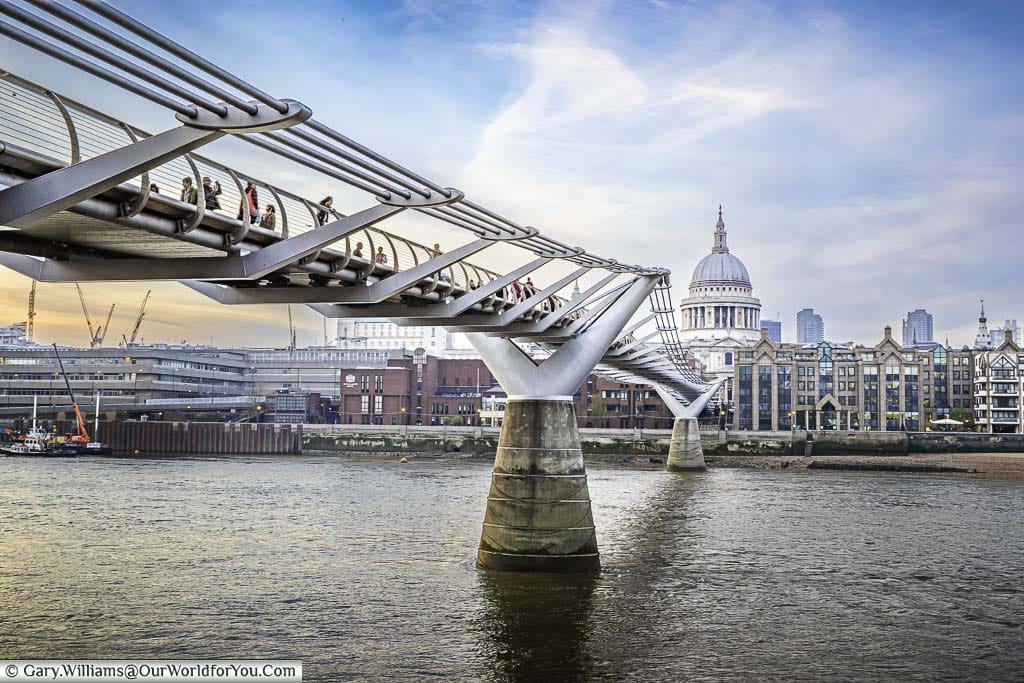
Nearby the Millennium Bridge is another icon of the Southbank skyline, and that is Tate Modern, once the former Bankside Power Station.
The Tate Modern is a modern and contemporary art gallery that houses work by some of the world’s most famous artists and sculptors, and admission is free. The gallery was opened on 11th May 2000 by Queen Elizabeth II.
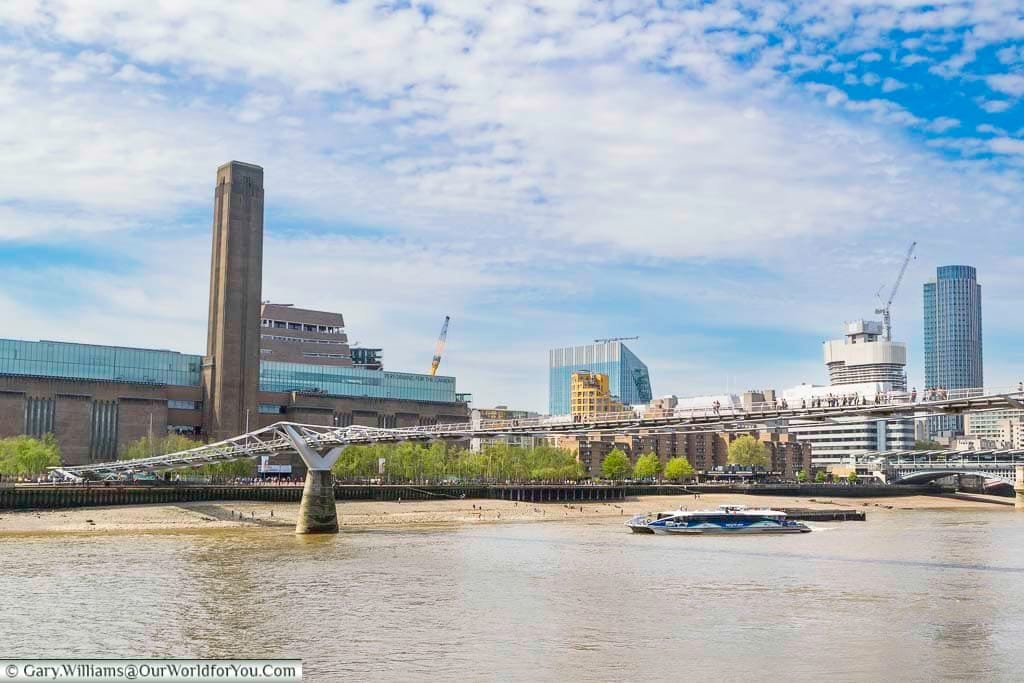
Quirky aspects of Bankside
Oh yes, and a couple of pubs tooIt wouldn’t be the same if I didn’t point out some quirky bits of this region of London, along with a few pubs and inns to pop into.
Anyone who knows me will know that I love visiting a cemetery or graveyards, so how pleased was I when I found out about Crossbones Graveyard. The only problem was the Crossbones memorial garden was closed when we visited. It is open 12-2pm Wednesday, Thursday and Friday.
However, here is a little knowledge of this historic and touching slice of South London, which can be found on Redcross Way.
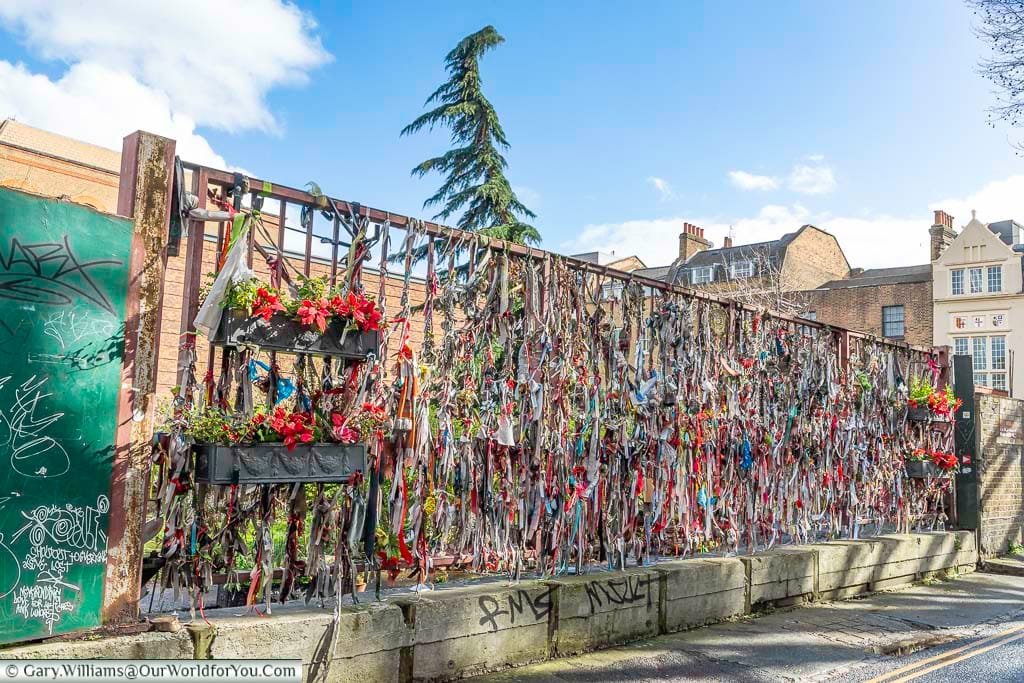
Cross Bones Graveyard was an unconsecrated burial ground. It was believed to have been used since 1598 and wasn’t closed until 1853. Up to 15,000 people are buried within this small site and predominantly from society’s poorer side. They included paupers and prostitutes known locally as “Winchester Geese”, as I mentioned, were licensed by the Bishop of Winchester.
A delightful communal garden has been created, and touching messages, ribbons, and offerings adorn the external gate.
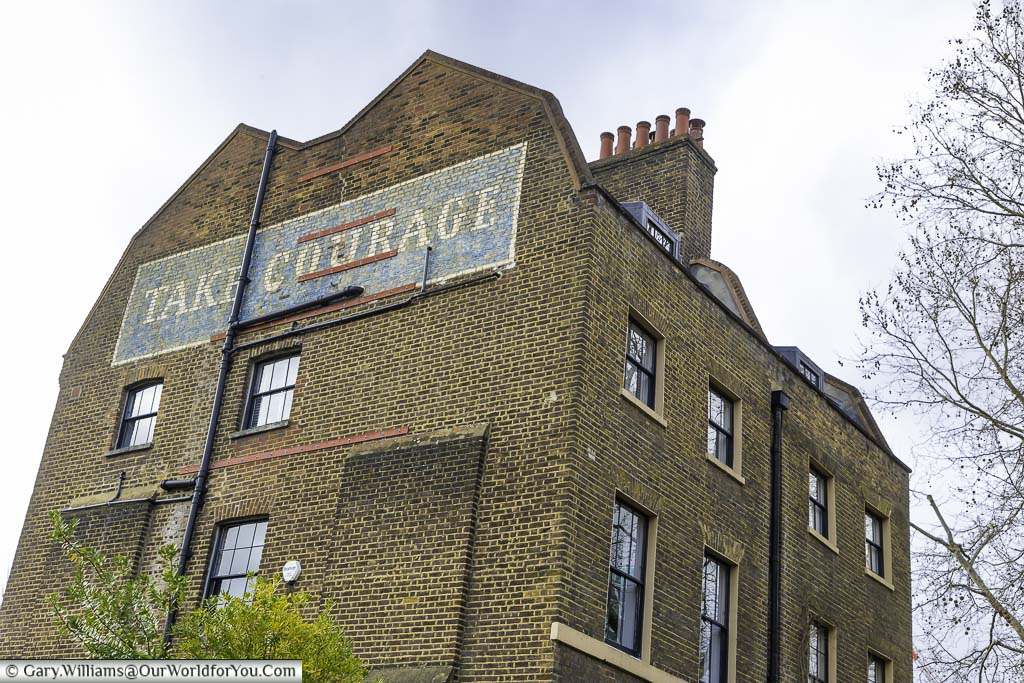
Also, along Redcross Way, high on the side of a residential home, is one of London’s ghost signs, “Take Courage”.
In the early 1600s, Anchor Brewery was established in Park Street, Southwark, and by the 19th-century became the largest brewery in the world. In 1955 Anchor Brewery, now operated by Barclay Perkins & Co, merged with Courage and continued to brew beer on this site until the early 1970s.
The slogan “Take Courage” was used by Courage from the 1950s.
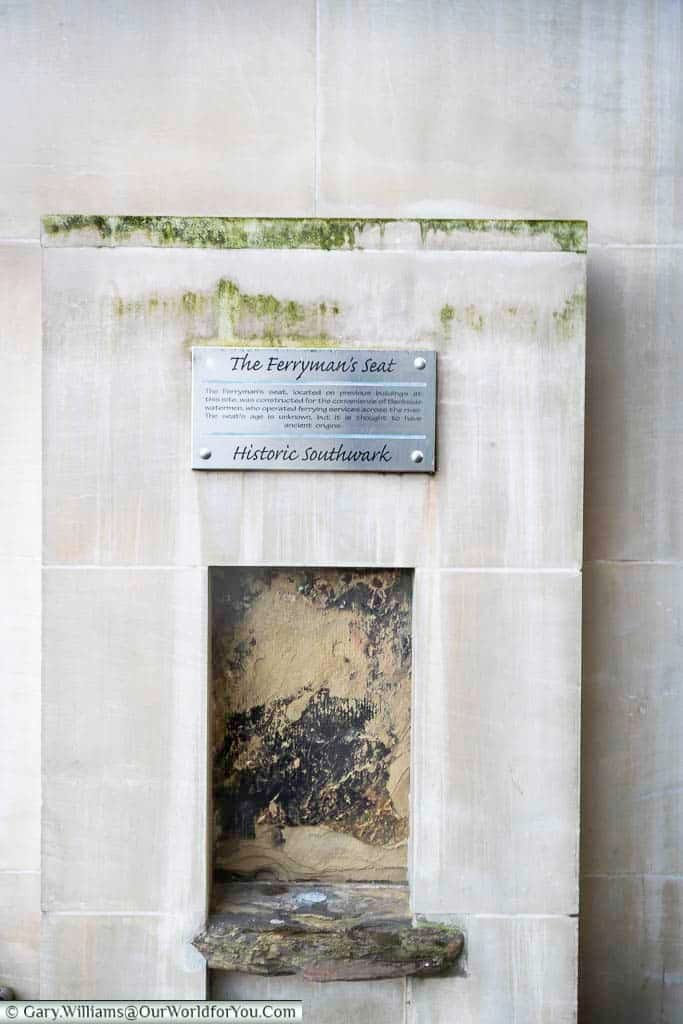
The next unusual site that we spotted was the Ferryman’s Seat. If you blink, you’ll miss it, as it is located on a narrow-cobbled lane just off Bankside named Bear Gardens. Bear Gardens was so named as this area of London was renowned for Bear Baiting pits during the 16th & 17th centuries.
I have recently found out that my great-grandfather was born in Bear Court in 1879. Unfortunately Bear Court has now disappeared; however, the adjacent street Bear Lane still remains. I knew I loved this region of London.
I digress; let’s get back to the Ferryman’s Seat; this rather crude stone plinth was used by the local ferryman while waiting for patrons to cross the River Thames on a water taxi service. This was once a thriving trade as the south of the river was quite an unruly region and attracted a few undesirables.
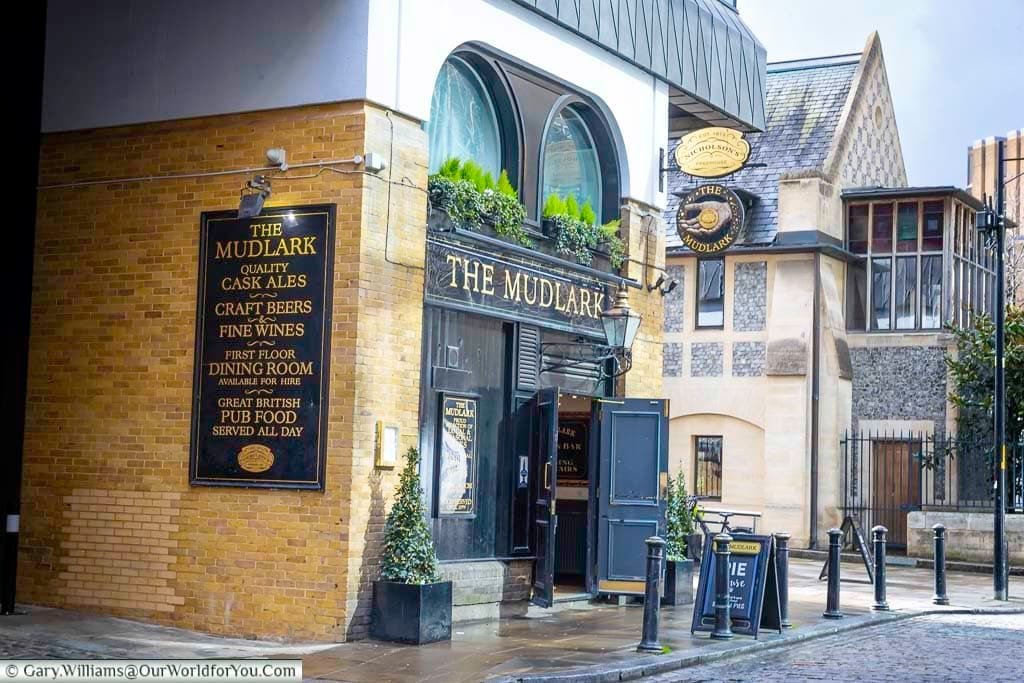
Not only will you find street performers along Bankside, but you’ll also spot plenty of pubs in the area. Gary and I have popped into a few of these inns over the years; they all have their own unique character and are great places to rest your weary feet while enjoying a pint or two.
Places to look out for around Bankside and Borough Market are The Mudlark, The Market Porter, The Anchor, The Old Thameside Inn, The Barrowboy and Banker and The Globe Tavern.
It’s good to talk! Tip Box
* This post may contain links to affiliated sites where we earn a small commission at no additional charge to you.
